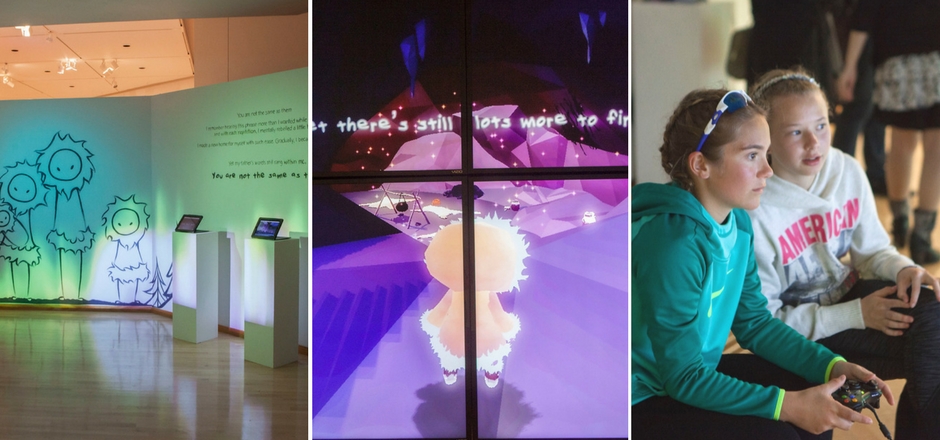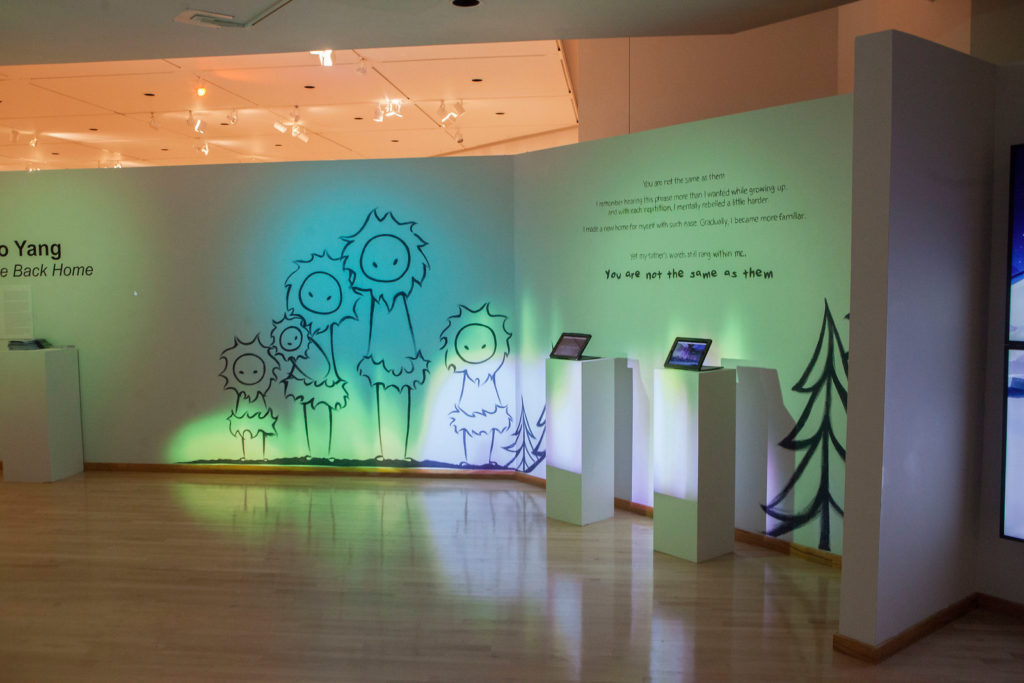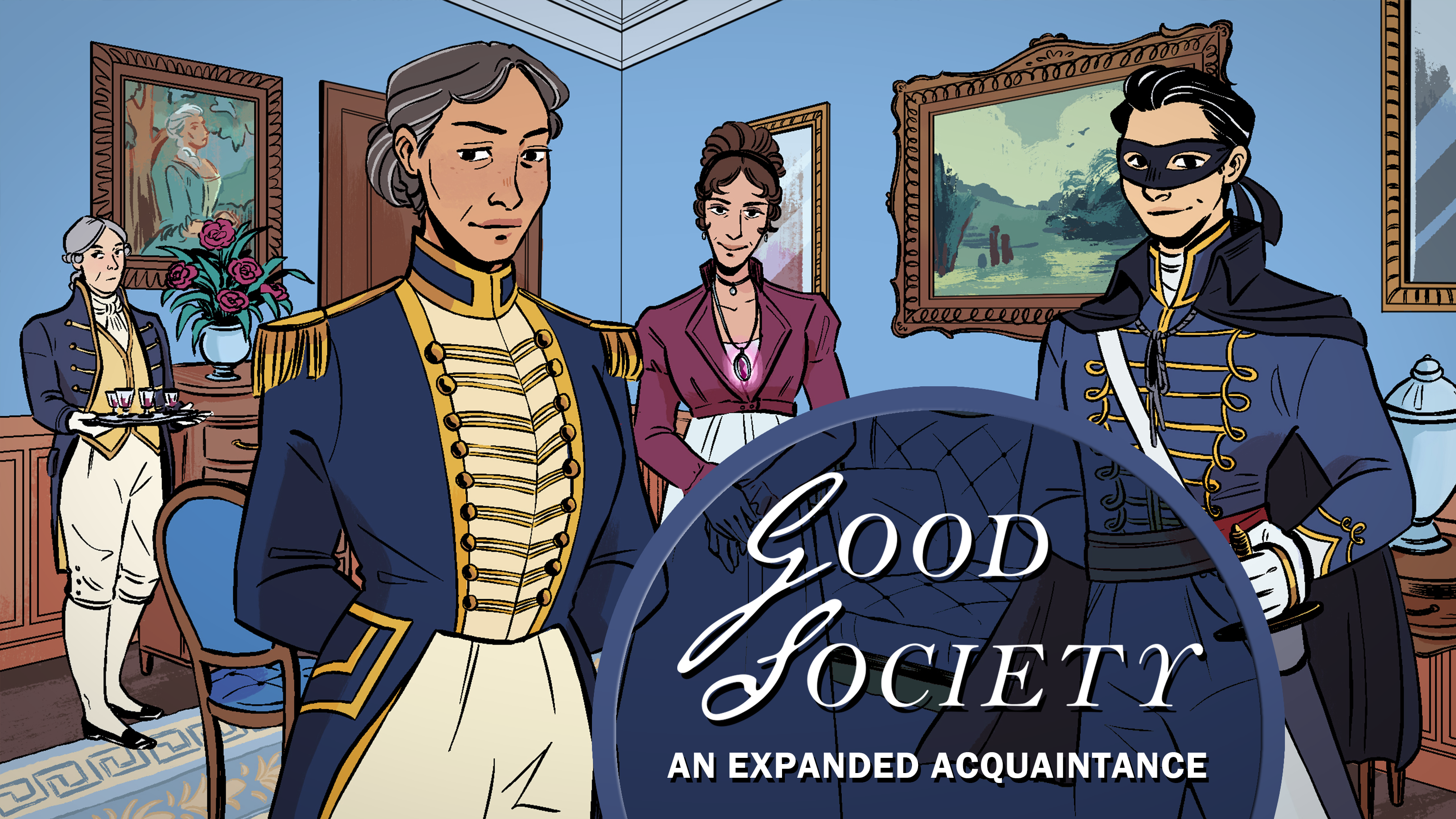Come Back Home is an indie game about a young girl, Anaaya, who discovers her village has disappeared overnight after returning from a fishing trip. She must piece together the clues and find out where her village has gone.
I was given the opportunity to interview CBH’s development team, which consists of director Xiao Yang, producer Jonathan Ampiaw, and developer Che Shian Hung, students at Bowling Green State University in Ohio. I asked them about their inspirations behind CBH, the creative process, how the team came together, and future plans once they complete the game.
—
Could you talk about Come Back Home’s origins? How did the idea come about? What was the inspiration behind it? How long have you been working on CBH?
Xiao: As of May, we officially have been working on the game for about seven months.
Come Back Home began as a class project. It originated from a spontaneous idea-pitch to the Computer Science collaborators. Back in middle school, I had semi-developed a character I felt very attached to – a young girl who had run away from home and later returned to find her village destroyed. This mini plot, along with the children’s book Julie of the Wolves (a story that was the catalyst for my interest in art), inspired the general basis for our game.
The underlying themes of CBH come from this novel, which tells the story of a girl who learned to coexist with wolves and eventually is faced with choosing between two traditions. Similarly, the journey of Anaaya is about identity and self-discovery, about feeling displaced despite familiarity. She is an expression of myself – a long-term immigrant who faces going back to a “home” I know nothing of.
The concept of the game’s story, however, draws from a myth of a vanished village in northern Canada. In the myth, a trapper who frequented the village found it completely empty one day, as if all its inhabitants dropped what they were doing and vanished. Since no one knows the truth of this event, CBH is a retelling of this story from the perspective of a little girl who was estranged from this event.
Why did you decide to have a female protagonist? What inspired Anaaya?
Xiao: At the very start of development, I knew I wanted the protagonist be a little girl. I later realized that this is partially because the game was also about me and my experience living in between cultures. I think in our current society, children are often seen as being delicate, especially girls. Yet in many cultures, children mature much earlier – whether they are ready or not – and are much more capable. After falling in love with many headstrong, female characters in books such as Julie from Julie of the Wolves, Firekeeper in the Firekeeper Saga, and Aeriel from the Darkangel Trilogy, I knew I wanted Anaaya to be adventurous and independent yet embody innocence.
What genre would you place CBH under (besides indie) and why?
Jon: I would place CBH under the genres of 3D Platformer and Exploration. CBH does involve some platforming elements to get through the game, though the main focus is on the exploration and the narrative. It falls under Exploration since a major [part of the] game is exploring and finding clues in order to piece together the story.
The CBH team is very diverse. How did the team come together? How many of you are there? Do you have your own studio where you work on CBH? How many hours do you dedicate to developing CBH?
Xiao: CBH began as a collaborative class project between the Digital Arts and Computer Science department at Bowling Green State University. Jon and I had known of each other and admired each other’s work prior to this project, so we easily agreed to work together. Originally, we had three programmers, though two of them left after the requirements of the class were completed. Shian agreed to stay and continue the game’s development with us even after the semester, and we have since then become good friends and teammates. While the diversity of our team wasn’t intentional, the experiences from our different backgrounds definitely contributed to the direction of our work and passion (we actually didn’t realize our diversity until someone pointed it out.)
We don’t have a studio, but Jon and I usually meet up at around 2 p.m. on class days, then work through two class sessions and continue well into the night. Sometimes, we’d be in the same seat from 2 p.m. to 12 a.m. aside from food breaks. If we started work later, we’d be there from 6 p.m. to 3 or 5 a.m. and sometimes update the janitors on our progress as they cleaned. Shian had a different schedule and would join us whenever her classes finished in addition to set weekly meetings. We also make good use of Google Drive and work from home, often being in 5 to 8-hourlong Skype calls per session. We did this on days [when] we didn’t have class and continued this routine well after the semester ended. It really felt like having a full-time job [laughs].
What are some of the difficulties you’ve faced during the creative process? How did you resolve them?
Xiao: I’m the lead artist so for me, the biggest difficulty was communicating my artistic vision while being aware of the practicality of my ideas. I had never used Unity [a cross-platform 3D engine] prior to this project and did not have a very proficient understanding of code (still pretty lost on this one). Learning a bit of both gave me a better idea of how my visions translate technically as well as how to adjust or improve them. Since this project is a collaboration between different departments, learning how to work with each other’s strengths took a little while. Eventually, we found out that our team has the perfect spectrum of skills (artist, technical artist, programmer) and learned to capitalize on our specialties.
Jon: I am the technical artist, so in my case, the most difficult parts were getting the art and the programming to work together fluently. Since I had worked with Unity before, I was used to its interface and how to get things to function with each other. Mainly a lot of the resolution was trial and error, and lots of googling.
Shian: Since I did not participate in the creative process in the first few months, as a programmer, I built the game structure based on the given requirements and functionalities. Therefore, at the latter creative process, it is hard to change specific functionalities due to the game structure. For instance, player movement and the camera gave me much of a headache because one subtle change could change the whole design. However, I tried to communicate with the director and our art technician about this issue and the risk to make the change – like the time costs and the overhead it brings to other functionalities. They understood the situation and reconfirmed the importance of changing the design. So, I took time to redesign a new system for the camera and player movement.
What other indie games do you look at (if you do) for inspiration? Why do you think CBH is different from those games? What sort of tone are you aiming for in CBH?
Jon: A game that we referenced a lot was Journey in terms of inspiration. CBH is very different from Journey in terms of the fact that it has a very direct narrative. Journey is more abstract, where CBH has a more linear storyline. The tone we’re aiming for in CBH is also pretty somber compared to Journey.
Xiao: We had a couple of other inspirations as well, such as Never Alone, Ori and the Blind Forest, Coffee Game (also a student-made game), and Child of Light, just to name a few. Besides simply loving these games, we looked to them mostly for identifying what elements we enjoy in those games and how – or if – we can incorporate [them] into ours.
I saw that the CBH team had a demo at the South by Southwest (SXSW) showcase. What was that like? How was the response to an early version of the game? Will you attend future conventions where you might have longer demos?
Jon: SXSW was awesome! It was our first time going to a large convention to show off a game, and seeing all the different reactions was really interesting. The game seemed to attract a diverse audience, ranging from young to old.
Xiao: We saw a lot of diversity in the nationalities of our audience as well. We had a very widely-ranged demographic visiting our booth and it was amazing to see so many people being interested in our game. My favorite was when a father read the narrative texts to his young daughter and they played through the game as if it were a bedtime storybook. I am very excited by the success we had at SXSW and hope to attend future conventions with more works!
What are your future plans after completing CBH (work on more indie games, work for major game companies, etc.)?
Xiao: Each of us dream of working for our favorite companies one day, but as of now, our goal is to continue making small games as a team and gain more experience for the big leagues.
Shian: My future plan is to start with more indie game projects and gain more programming experience. I am also fine with working for major game companies, but I definitely would like to keep working on my own game project at the same time.
What advice would you give to people who would like to start their own indie game(s)?
Xiao: It sounds cheesy but passion is very important – think about why you love games and what you want to share with the world through them. How can you tell your story in a way that resonates with others? Those are the games that are remembered. But most important of all, find people to share your passion! For me, the best part of this whole experience has been the journey we made together as friends.
Jon: Find a team of people! Working together with the CBH team has been what made making the game so successful and entertaining. Make sure you build a good friendship with your team since that will definitely make the experience more enjoyable!
What platforms will CBH be available on? (Steam, mobile, etc.)
Jon: Currently we only have plans to release CBH on our website.
Xiao: We learned a lot during the development journey. Since CBH is our first game, we have decided to release it as an open source game, though depending on how development goes, we may also release it on Steam because, why not?
Finally, do you have a tentative release date?
Jon: Not at the moment. We’re still working on some other things and unsure of whether we will polish it up a bit more or just release it in its current state.
—
A huge thank you to Come Back Home’s team for having this awesome interview with me! Visit their website here to keep an eye out for updates and additional info.
[coffee]










Ooooh! Looking forward to this release!